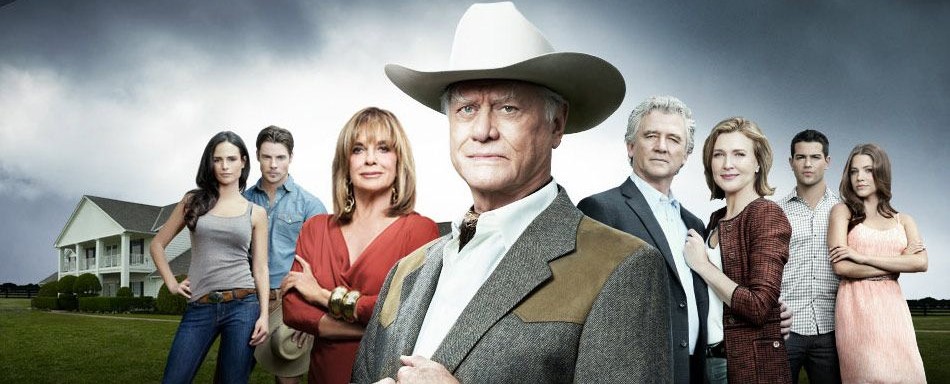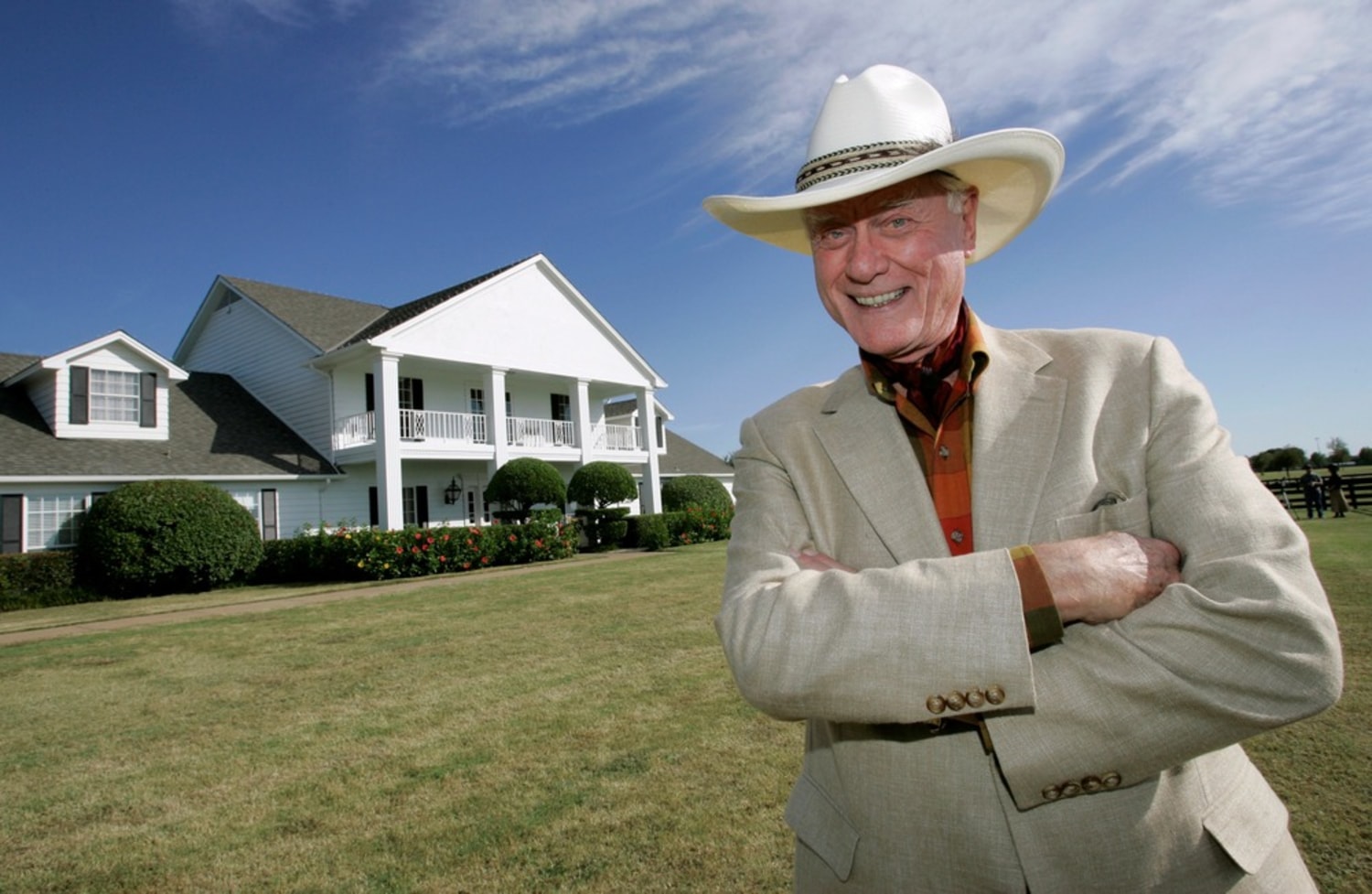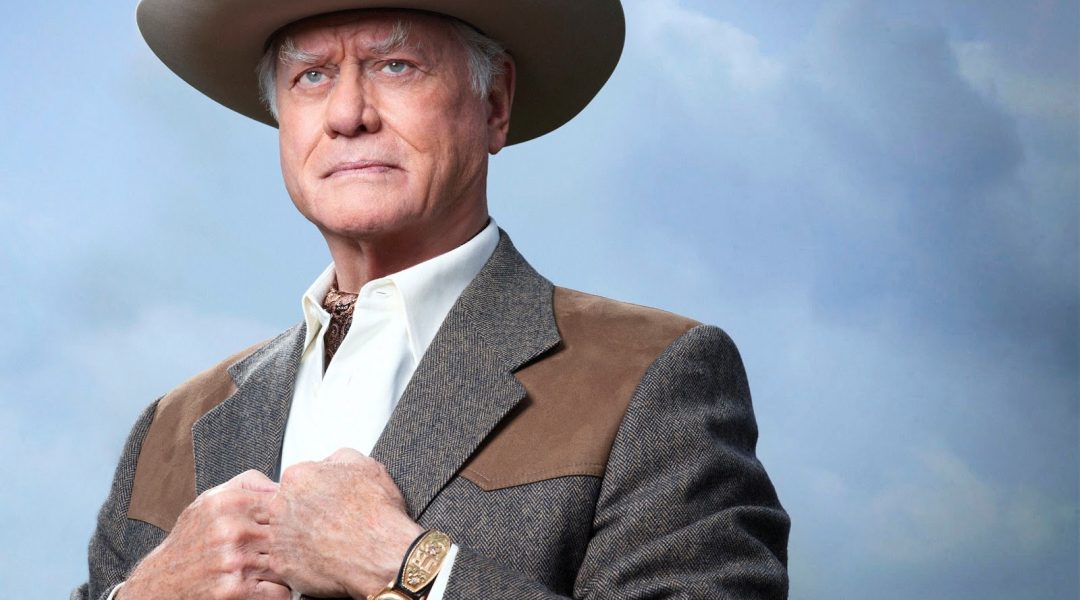The Fort Worth-born actor attracted millions of TV viewers who wanted to know “Who Shot J.R.?”
Scott Fitzgerald had it all wrong: There actually are second acts in some American lives.
Just take a look at Larry Hagman, the late, great actor who loomed large as a pop-culture icon throughout the world for some 13 years, thanks to his larger-than-life portrayal of amoral Texas oilman J.R. Ewing in Dallas, the phenomenally popular prime-time soap opera.
More than two decades after the original series ended its 1978-1991 run on CBS, Dallas was successfully rebooted last year on TNT — and Hagman once again donned the Stetson and resumed the scheming of J.R., much to the delight of both longtime fans and first-time viewers.
Television critic Ken Tucker was especially impressed by a scene in a late-season episode in which J.R. offered “his version of a life-sustaining pep talk” to his comatose brother Bobby (Patrick Duffy): “You keep fighting!” J.R. commands. “You keep fighting me!”
It was “a rare moment of sincere sentiment on the part of one of television’s greatest villains,” Tucker wrote. “And I’d add two things about that sentence: It’s kind of amazing that the reconstituted Dallas has managed to do justice to Hagman’s great portrait of villainy. And when I invoke sincerity in the context of J.R., it’s always undercut by J.R.’s option to turn earnestness into an even deeper form of deviousness.”
When Hagman passed away of throat cancer at age 81 on Friday, he was six episodes into the second season of the new Dallas, and by all accounts he was relishing every moment of his second go-round as J.R. In between, he had survived cirrhosis of the liver and a liver transplant in 1995 and candidly told the story of how during the heyday of the original Dallas he would sometimes put away five bottles of champagne a day. He knew full well that, in this multiple-option day and age of TV cable-casting and time-shifting, he was playing to an appreciably smaller weekly audience than he enjoyed during the run of the original series. “I’m used to having 18, 20 million viewers,” he only half-jokingly remarked during an Entertainment Weekly interview. “And now we’re having 4 and 7 million.” Even so, he added, “They tell me that’s extraordinarily good, so I’ll just go along with that.”
And why not? After all, how many times does an actor get even a single run as a television icon?

To be sure, Hagman could point to other impressive performances on a lengthy résumé compiled during his 60 years in show business. Born in Fort Worth, Texas, to future Broadway actress and musical comedy star Mary Martin (she originated the role of Peter Pan on stage and TV in the 1950s), he made his big-screen breakthrough in Fail Safe (1964), playing an understandably anxious interpreter for a U.S. president (Henry Fonda) trying to avert World War III during hot line consultations with the Soviet chairman. A decade later, he briefly triggered Oscar buzz on the strength of a single scene in Harry and Tonto (1974), in which his character, a glad-handing businessman, breaks down in tears while admitting his near-bankruptcy to his aging father (Art Carney).
In 1977, Hagman earned praise for his work in Intimate Strangers, a made-for-TV drama that cast him as a boorish salesman who jokes about beating his wife — and is horrified to discover a co-worker (Dennis Weaver) is seriously abusing his own spouse. Critics were equally impressed by Hagman’s vividly detailed portrayal of a career politician who’s more or less blackmailed into dropping out of a presidential run in Primary Colors (1998).
And many viewers of a certain age continue to fondly recall Hagman’s winning performance as Capt./Maj. Tony Nelson, the astronaut “master” to Barbara Eden’s harem-beauty “genie” in the popular sitcom I Dream of Jeannie (1965-1970).
Still, it was J.R. Ewing that made Hagman a household name throughout the world and earned him two Emmy nominations. Indeed, an estimated 350 million people around the world tuned in to Dallas on Nov. 21, 1980 to learn the answer to the burning question raised by the Season 3 finale cliffhanger: “Who Shot J.R.?” So it’s only fitting that it was as J.R. Ewing that he savored one last taste of international celebrity.

Hagman certainly wasn’t hesitant to reprise the character. “It’s always fun,” he told Entertainment Weekly shortly before the Season 1 finale of the Dallas reboot. “Look at the fame I have. I love every moment of it. And why not? I like what I’m doing. I love the people — even the new ones. And they treat me like a king for God’s sake.”
Hagman’s return to prime time as the dastardly Texas oilman was impeded only briefly, when he was diagnosed with cancer shortly before the start of production on Season 1. After receiving the bad news, The New York Times reported, Hagman sounded more than a bit like his famous TV character when he responded, “As J.R., I could get away with anything — bribery, blackmail, and murder. But I got caught by cancer.”
Even then he proved you can’t keep a bad man down: Hagman was able to schedule his shooting days around his chemotherapy and radiation treatments.
Interviewed at the end of Season 1, Dallas executive story editor Gail Gilchriest admitted that she and her fellow writers had steeled themselves for a worst-case scenario when they started work on the reboot. “But we were sort of surprised,” Gilchriest said. “We thought, We’re going to have to be really easy on Larry. But it turns out we really didn’t have to be easy at all.
“We did have [Hagman’s condition] more in the back of our minds just as a human issue. But it never was an issue. And we never had to change any part of our master plan for the season.”
So what was the secret of Hagman’s success as a scoundrel who took such delight in his deviltry? In its obituary, The Los Angeles Times repeated Hagman’s common comment that he played J.R. as a composite of “all those good old boys” he’d known growing up in Texas, “who caught more flies with honey instead of vinegar.” Maybe, as Gilchriest suggested last year, the late actor managed to remain disarmingly charming, even as his character was ruthlessly scheming, because he was able to indicate that this bad guy wasn’t all bad.
“Every time J.R. shows a color other than scheming, it gives you goosebumps,” Gilchriest said. “It’s amazing. All the writers, we’ve really psychoanalyzed J.R., so that, by now, everybody in the room sort of loves him. And not loves him because we’re supposed to hate him. But loves him and sort of understands what made J.R. J.R.
“There are moments when he shows he has a heart, and it’s really hard not to be moved — whether you’re in the audience, or in the writers room. You think, Well, of course his loves his son. And of course he loves his brother. Even the devil has a heart. Those scenes are really fun to write.
“And, of course, Larry just knocks it out of the park when we ask him to do it.”
Alas, Dallas, has lost its most valuable player. But in endless reruns and audiences’ memories, he’ll forever be hitting it out of the park.














